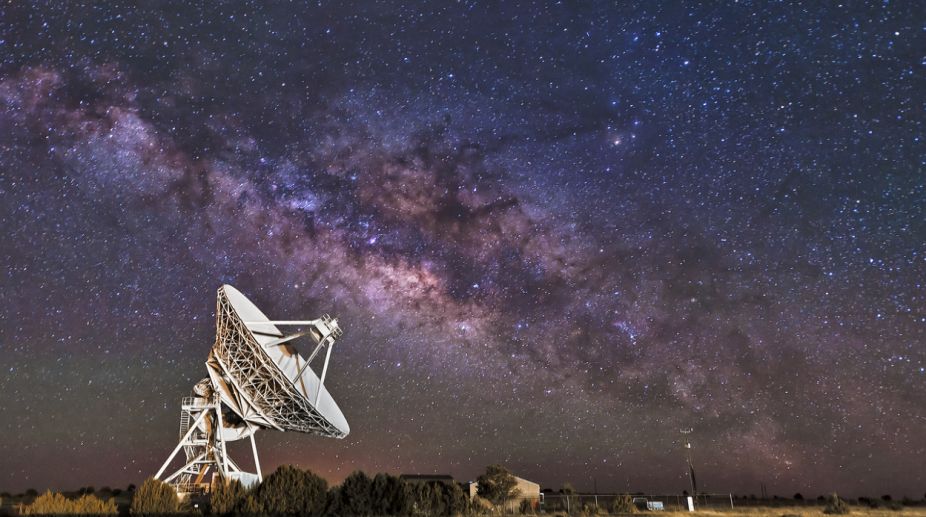Crisis Escalates
As Earth continues to spiral into a climate crisis, the recent revelation of March 2024 marking the 10th consecutive month of record-breaking heat should serve as an unignorable wake-up call.

(Photo: Getty Images)
In the last 20 years, we have discovered over 3,500 planets around other stars. At the moment we know how far away from their parent star they are and one (or sometimes both) of their mass and size.
An increasing number of the planets we are finding are “Earth-like” in that their mass and size are similar to Earth’s. At the moment we have no idea if they have similar temperatures, oceans or if they have life — but there is the fascinating possibility that they could. To search for life on other planets, astronomers are working on the next generation of huge telescopes, the largest of which will be the 40m “European Extremely Large Telescope” in Chile.
These telescopes will have the ability to determine the composition of the atmospheres of Earth-like planets and search for signatures of life — on Earth the 20 per cent oxygen content of our atmosphere is a giveaway that we are a living planet as it needs plants to produce it.
Advertisement
This new generation of telescopes with the ability to detect aliens should be working in less than a decade. This has led many scientists in many disciplines to start considering in detail the question, “what would aliens be like?” At the moment we (that is, Earth life) are the only example of life, and most of our ideas tend to centre on what Earth-life is like, and considering to what extent aliens might be the same.
All life on Earth is based around four main chemical elements — carbon, hydrogen, oxygen, and nitrogen. Other elements like phosphorus, calcium, sulphur, iron, and magnesium are important for life but the Chon elements make up the vast majority of humans, trees, bacteria et al. Those elements are the main constituents of all the molecules that make us work — carbohydrates for energy, amino acids in proteins, nucleic acids and DNA, fatty acids in cells.
What is extremely interesting about the Chon elements is that they are by far the most common reactive elements in the Universe (helium is very common but cannot do chemistry). So we know life can work using Chon and we see them everywhere in the Universe, so it seems a reasonable guess that alien life could well be based on the same basic elements as we are. So most scientists who think about aliens agree looking for Chon life is a pretty good bet. The most important non-biological molecule for life on Earth is liquid water (two hydrogens and an oxygen).
A liquid is important for moving things around your cells and body, water can dissolve some molecules (like sugar which makes it easy to transport), while others won’t dissolve in water (like fats, which means we can make cell membranes and other structures from them). Water is interesting because it is very common (H and O which we know are very common), and one of the few molecules that is a liquid at the sort of temperatures life like us would need. If the temperature is too low (below about -200 o C) there isn’t enough energy to break and make the molecules of life, if the temperature is too high (above about 400 o C) then all the molecules of life fall apart.
In this range, water is a liquid in the middle of it, and methane and ammonia right at the bottom. Of the Chon elements, carbon is the most important. Carbon can bond with itself to make rings, and complex two and three dimensional molecules, which are the basis of the structure of life’s molecules. The only other element, which might do the same job is silicon that has the same ability to bond with itself (hence the sci-fi trope of “silicon based life”).
But there are two big problems with using silicon. First it is difficult to get — carbon life tends to occur when plants take carbon dioxide and break off the carbon (and throw-away the oxygen) but silicon is usually found in silicon oxides, otherwise known as rocks, which take much more energy to get. Silicon is a bigger atom than carbon, so big silicon molecules often fall apart quite easily and they don’t react well with water, so another liquid would be needed. We are a carbon-based/Chon biochemical life form that uses liquid water, and this is what we tend to think alien life would be like as well. But we could well be wrong.
Maybe most life is very different. Maybe there are many ways to make life and we are just one particular way. Maybe there are many computer based technological life forms out there. The one way we can know is to go and try and find life on other planets, and in a decade we should start to get some answers.
(The writer is professor of theoretical astrophysics, University of Sheffield, UK)
Advertisement